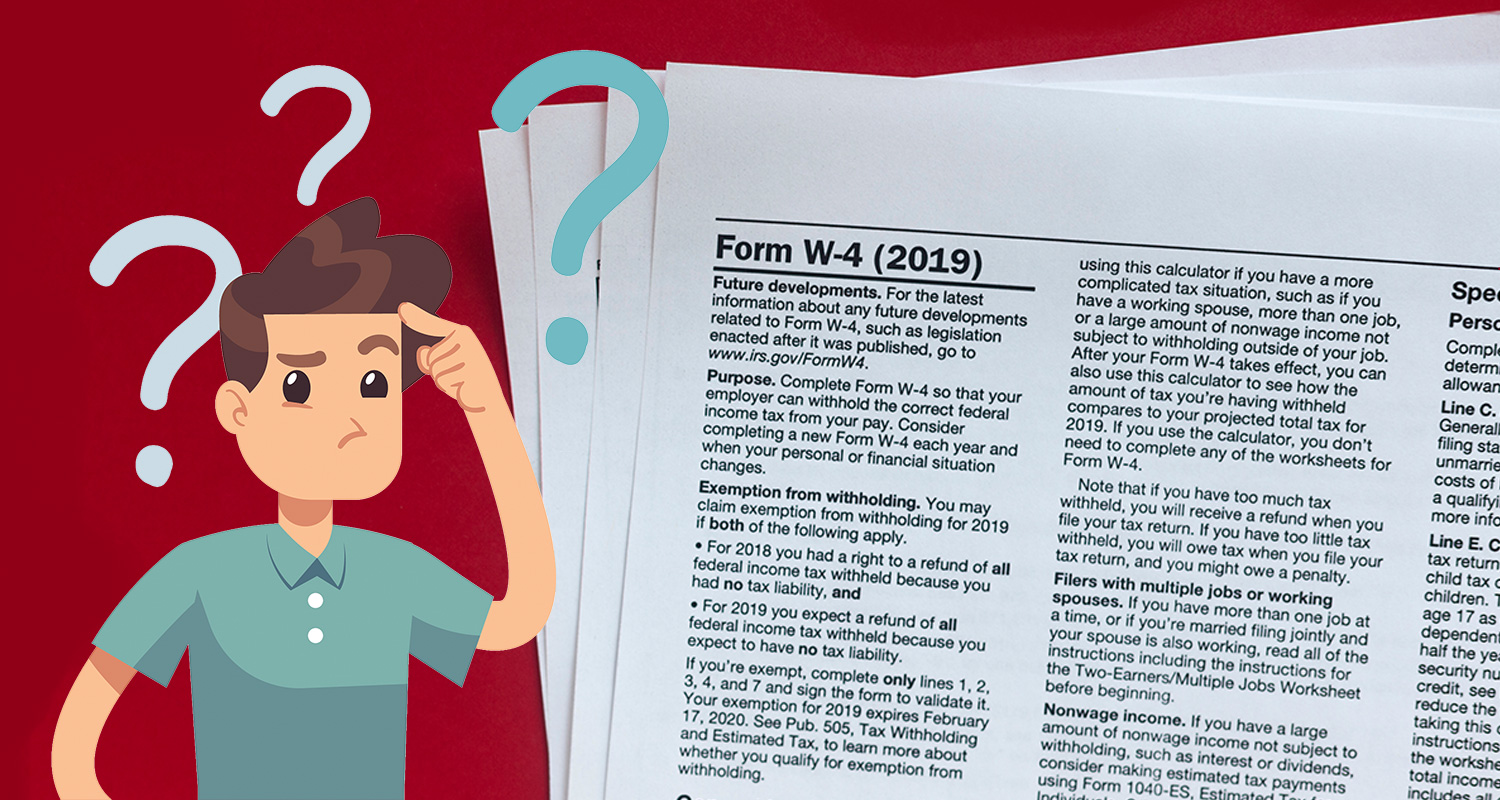Menu
ROUTING NUMBER: 307070050
Rest Confident, Your Money is Safe and Secure at Kirtland Credit Union, a message from our President & CEO. Learn More
All Kirtland CU branches and locations will be closed on Monday, September 2 in observance of Labor Day.
Our TellerPhone service is experiencing intermittent issues. We are working diligently to resolve. Please use our Online and Mobile banking services. We apologize for any inconvenience.
Phishing scams are on the rise – don’t get caught! Learn how to spot scams and more at our Fraud Awareness and Prevention Center.
If you have been financially impacted by the wildfires and floods in the Ruidoso area, we have options available to help. Call us at 1-800-880-5328 to learn more.
ROUTING NUMBER: 307070050


By Ashleigh, K-Staff
When is the last time you looked at your W-4 form?
If you just scratched your head and thought, “What’s a W-4 form?” then you are in good company. If you’re like many employed Americans, you likely filled out a W-4 as part of your hiring process, and you never saw it again. And if you haven’t made edits to your form lately, you could be in for a rude awakening on your tax filings next year after some major tax changes in 2018. With a brand-new W-4 form for 2020, now is the time to double-check your form and make any updates.
So let’s start with the basics. Your W-4 form lets your company know how much to withhold for state and federal taxes every paycheck. The old W-4 form asked you for a number of “allowances” to determine your withholding. The more allowances you enter, the less tax would be taken out of your paycheck. These allowances ostensibly matched up with the personal exemptions you’d be able to claim on your taxes—if you’d entered the proper amount of allowances, you’d neither owe or receive refunds come tax time.
But with the sweeping changes to the federal tax code in 2018, personal exemptions were done away with at the federal level in favor of nearly doubling the standard deduction and limiting certain itemized deductions, including applying a new $10,000 cap on state and local tax deduction. To catch up with this new tax reality, the new 2020 W-4 form is a lot more dynamic in terms of the information it takes into account. On the redesigned form, you’ll be asked for personal information, information about other jobs or your spouse’s job, dependent information, and other factors that could affect your tax situation.
To help filers gets ahead of these changes and take advantage of the new W-4 form, the IRS has answering some of your most taxing (hehe) questions about the redesigned W-4 form.
Why did the IRS put out a new form?
The new design reduces the form’s complexity and increases the transparency and accuracy of the withholding system. While it uses the same underlying information as the old design, it replaces complicated worksheets with more straightforward questions that make accurate withholding easier for employees.
Do I have to fill out a new form?
No. Employees who have furnished Form W-4 in any year before 2020 are not required to furnish a new form merely because of the redesign. Employers will continue to compute withholding based on the information from the employee’s most recently furnished Form W-4.
Why do I need to account for multiple jobs on the redesigned form? I never had to before.
Tax rates increase as income rises, and only one standard deduction can be claimed on each tax return, regardless of the number of jobs. Therefore, if you have more than one job at a time or are married filing jointly and both you and your spouse work, more money should usually be withheld from the combined pay for all the jobs than would be withheld if each job was considered by itself. Adjustments to your withholding must be made to avoid owing additional tax, and potentially penalties, when you file your tax return. All of this has been true for many years; it did not change with the recent tax law changes. The old Form W-4 accounted for multiple jobs using detailed instructions and worksheets that many employees may have overlooked. Step 2 of the redesigned Form W-4 lists three different options you should choose from to make the necessary withholding adjustments. Note that, to be accurate, you should furnish a 2020 Form W-4 for all of these jobs.
When should I increase or decrease my withholdings?
You should generally increase your withholding if:
You should generally decrease your withholding if:
Where can I find the redesigned W-4 form?
You can download the new form here. You can also stop by your HR department and request to fill out the new W-4 form.
So, make visiting your HR department a priority in 2020 and be tax ready next year!
You can also take advantage of a handy tool from the IRS that can help you estimate your withholdings.
Connect With Us
Routing Number: 307070050
6440 Gibson Blvd. SE, Albuquerque, NM 87108
Federally insured by NCUA Equal Opportunity Lender